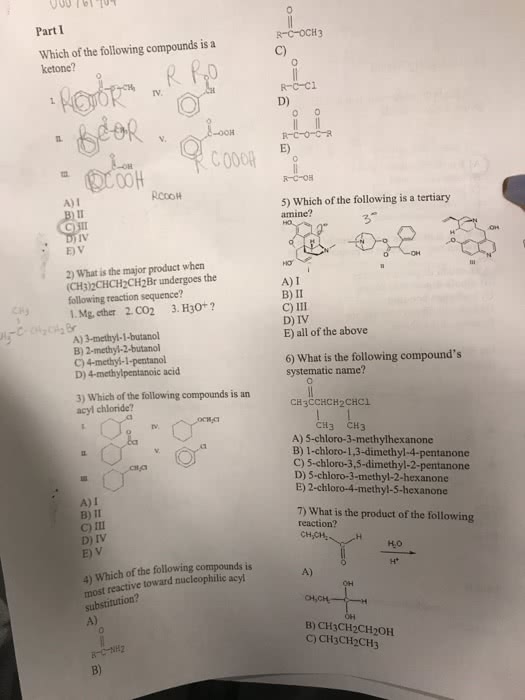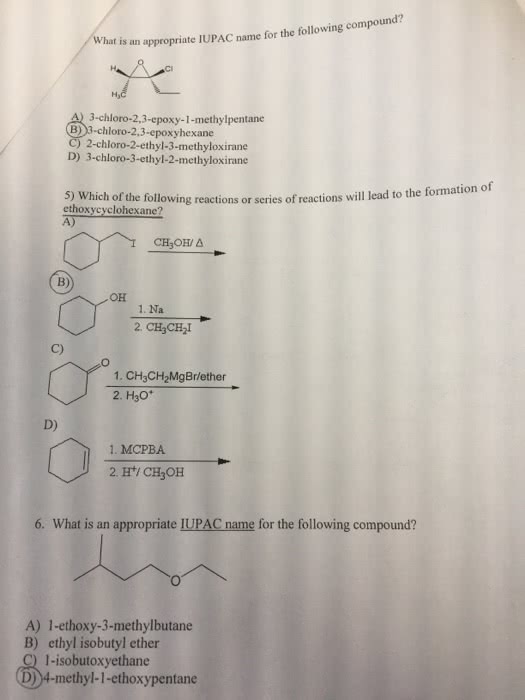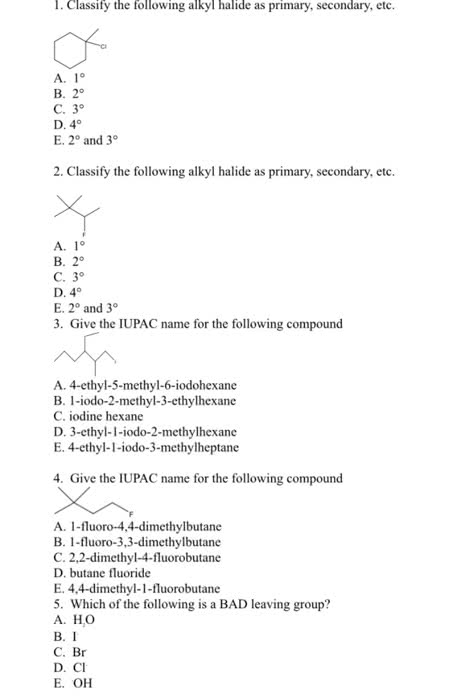CHEM 272 Chapter Notes - Chapter 7: Leaving Group, Diethyl Ether, Dimethyl Sulfoxide
Document Summary
Which of the following alkyl halides is a primary alkyl halide? (cid:1) (cid:2) Which of the following alkyl halides is a tertiary alkyl halide? (cid:3) What is the iupac name of the following compound? (cid:3) What is the iupac name of the following compound? (cid:3) (cid:1) (cid:2) (cid:3) (cid:3) (r)-3-chloro-6-ethyloctane (s)-3-chloro-6-ethyloctane (s)-6-chloro-3-ethyloctane (r)-6-chloro-3-ethyloctane. What is the iupac name of the following compound? (cid:3) (cid:3) (cid:3) trans-4-methylcyclohexyl chloride trans-p-chloromethylcyclohexane trans-4-methyl-1-chlorocyclohexane (cid:1) (cid:2) trans-1-chloro-4-methylcyclohexane. Which of the following solvents is not a polar protic solvent? (cid:3) Rank the following in order of decreasing nucleophilicity, putting the most nucleophilic rst. (cid:3) Ii > iii > i > iv (cid:1) (cid:2) Iii > ii > iv > i (cid:3) (cid:3) The reaction of tert-butyl bromide, (ch3)3cbr, with ethanol affords the substitution product tert-butyl ethyl ether, (ch3)3coch2ch3, in acidic conditions. What would happen to the rate of the reaction if the concentration of ethanol was doubled? (cid:1) (cid:2)




